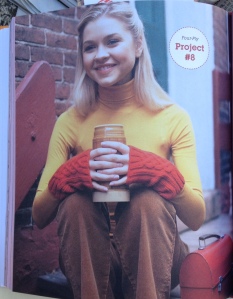 I’ve finally finished all the fibers, ending with cellulosic (not to be confused with cellulose made from plants) that are plant-based such as rayon but extruded. This is complex – you’ll have to read the book! The last section was on synthetic fibers – something I’m really familiar with having worked for several yarn companies who specialize in yarns from synthetics. Basic take-away on these sections is that both cellulosic and synthetic fibers were created to replicate natural fibers such as wool.
I’ve finally finished all the fibers, ending with cellulosic (not to be confused with cellulose made from plants) that are plant-based such as rayon but extruded. This is complex – you’ll have to read the book! The last section was on synthetic fibers – something I’m really familiar with having worked for several yarn companies who specialize in yarns from synthetics. Basic take-away on these sections is that both cellulosic and synthetic fibers were created to replicate natural fibers such as wool.
So, moving along – I can see this year of reading is going to go pretty slowly if I don’t accelerate!
Making yarn starts talking about small spinners that make yarn – sometimes for themselves and sometimes for other small yarn companies. I must admit that most of my experience is with huge companies that create tons of yarn a year rather than a limited number of pounds/kilos.
Clara added an informative page with fiber festivals throughout the US by month. I didn’t know there is one in CT in April. Will add it to my list of must-dos this year.


